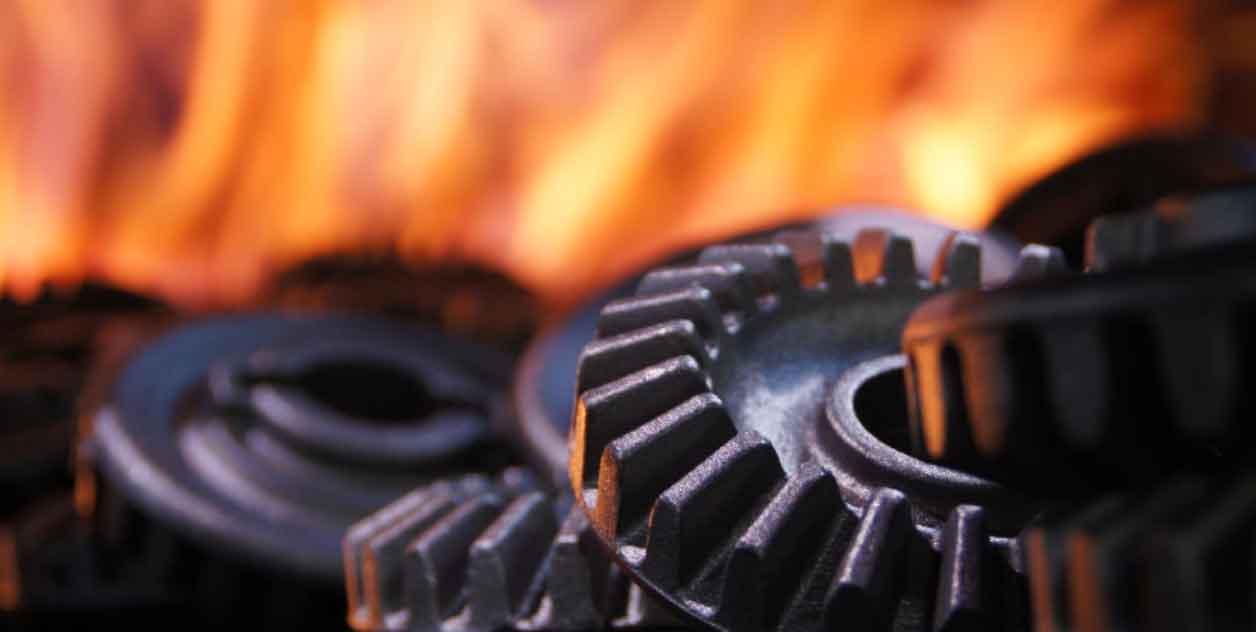Heat treatment plays a crucial role in enhancing the mechanical properties and durability of helical gears. While the basic principles of heat treatment remain the same, advancements in technology have allowed for more precise control over the process, resulting in improved gear performance. Here are some advancements in heat treatment technology for helical gears:

- Induction Hardening: Induction hardening has gained popularity in recent years due to its ability to provide localized heat treatment. It involves using high-frequency induction coils to heat only specific areas of the gear, such as the tooth surface, while keeping the core relatively cooler. This process allows for precise control over the hardened zone, resulting in improved gear strength and wear resistance.
- Carburizing and Carbonitriding: Carburizing is a well-established heat treatment technique for gears, involving the diffusion of carbon into the surface layer to increase its hardness. Carbonitriding is a similar process that introduces both carbon and nitrogen into the surface layer, further enhancing the hardness and wear resistance. Advancements in gas and liquid carburizing techniques, such as the use of improved carburizing atmospheres and quenching media, have led to better control over the process and more uniform results.
- Vacuum Heat Treatment: Vacuum heat treatment has gained popularity for its ability to provide a clean and controlled environment during the heat treatment process. In a vacuum chamber, the gear is heated and cooled under controlled conditions, which helps eliminate the risk of oxidation, decarburization, and distortion. Vacuum carburizing and vacuum quenching are particularly beneficial for helical gears, as they provide excellent control over case depth, hardness, and distortion.
- Computer-Aided Simulation and Control: Advances in computer simulation and control systems have revolutionized the heat treatment process. Computer models can accurately predict the temperature distribution, phase transformations, and residual stresses during heat treatment. This information enables engineers to optimize the process parameters and minimize distortion, resulting in gears with improved dimensional accuracy and performance.
- Advanced Quenching Techniques: Quenching is a critical step in the heat treatment process, where the heated gear is rapidly cooled to achieve the desired hardness. Advanced quenching techniques, such as high-pressure gas quenching and precision oil quenching, have been developed to provide more uniform and controlled cooling rates. These techniques help minimize distortion and the formation of undesirable microstructures, resulting in gears with improved mechanical properties.
- Surface Modification Technologies: In addition to traditional heat treatment processes, various surface modification technologies have emerged to further enhance the performance of helical gears. These technologies include shot peening, nitriding, and laser surface hardening. They provide localized surface hardening, improved fatigue strength, and enhanced wear resistance.
Overall, advancements in heat treatment technology for helical gears have focused on improving process control, reducing distortion, enhancing surface hardness, and optimizing the mechanical properties. These advancements have resulted in gears with improved durability, efficiency, and performance in various applications.
